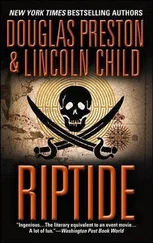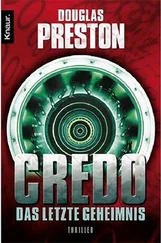“I’m Ms. Lupei,” she told the man behind the counter. “I’m afraid my husband has rather made a mess of the Grande Suite. Please put all damages on the credit card you have on file. I’m checking out.”
And with that, she gave the man a grim little smile, turned on her heel, and walked toward the hotel exit, the occasional drop of blood dripping from her skinned knuckles onto the polished marble floor.
At the tail end of rush hour, it was a fifty-minute drive in heavy traffic from the Setai Hotel to Miami Baptist Hospital, one of the largest hospitals in South Florida. Petru Lupei parked his rental car in a dingy garage about a quarter mile away, pulling into a dark spot behind a steel column that blocked the view of the security camera covering the area. Inside the car, he changed out of Lupei’s elegant suit, carefully folding it on the seat. Then he dressed in the clothing of Dr. Walter Leyland. He pulled on Leyland’s casual khaki slacks and a blue shirt and polyester tie, knotted it sloppily, then pulled on his white hospital lab coat with his ID badge clipped to the lapel. He put Dr. Leyland’s wallet into his pocket, with its Florida driver’s license and credit cards, and slipped Dr. Leyland’s cell phone into the other pocket. Taking two balls of cotton out of the doctor’s bag that sat on the passenger seat, he inserted them into his mouth, wedging them up between his upper gums and his teeth, to give Leyland his characteristic pudgy face, and he removed Lupei’s blue-colored contact lenses and replaced them with Leyland’s brown ones. He brushed white stage powder into Lupei’s hair, changing the light brown to salt-and-pepper.
As he morphed identities, Diogenes felt a certain sadness that the carefully created and lovingly nurtured Dr. Walter Leyland of Clewiston, Florida, would soon meet his demise. It was, in a way, like the death of a good friend. But sacrifices had to be made. And besides, he’d never given the Leyland identity the care and feeding he had to, say, Hugo Menzies, or in particular Petru Lupei. Lupei was, in fact, his masterpiece — totally impregnable, impossible to trace, absolutely authentic, real Social Security number, meticulously devised and constructed: the name he planned to hide behind for the rest of his life.
Leyland carefully placed Petru Lupei’s clothes and shoes in the oversize doctor’s bag. On top of them he put a slim stainless-steel container holding the good doctor’s surgical instruments, a contact lens case, and the small bottle of actors’ hair color, along with Lupei’s wallet and glasses.
Beside everything else in the bag sat the small medical container for transporting human tissue.
The car would soon be of great interest to the police. It had been rented by Dr. Leyland and would have his DNA all over it. There was nothing he could do about that. A DNA swab in the car would match Dr. Leyland; so would the fingerprints. That was as far as the DNA and fingerprint database matching would go, as this was a case that would be very quickly solved. A second person in the world also had Leyland’s DNA — by the name of Diogenes Pendergast — and that DNA was, most unfortunately, in the FBI database. But that secondary search would not likely be made once Leyland had been so quickly identified. Even if it were, Petru Lupei had assiduously avoided leaving any official record of his own — matching — DNA. Nothing in the car would connect with Petru Lupei.
Excellent.
He closed the valise and left the garage by a previously scouted route — a route that made sure the good doctor Leyland was adequately captured on security videos along the hospital’s perimeter. Once again he mused that the quicker this was concluded, the better.
He walked down Southwest Ninety-Fourth Street, across the lush hospital campus, and soon arrived at the main entrance. Nearly two thousand doctors were affiliated with Baptist, so he had no fear of being challenged here. He had already arranged to have his ID authorized, a simple matter for any Florida doctor with credentials and minimal hacking skills. He swiped his badge with the magnetic stripe when he went through security, under the attentive but friendly eye of the guards, and entered the spacious lobby. Having previously memorized the hospital’s layout, he walked briskly past more cameras to the elevator bank — looking like a doctor with a purpose — and took an elevator to the intensive care unit. This floor also contained a nearby suite of operating rooms.
Leyland knew that any unrecognized doctor going into the ICU was likely to be scrutinized and possibly even stopped by a nurse, albeit with a friendly Hello, Doctor, can I help you? To lessen that possibility, before entering the ICU he made his way to the operating suite and used his card to enter the doctors’ locker room. There, across from the rows of lockers, he found what he was looking for: a scrub dispensing machine, the size of a gigantic filing cabinet. He swiped his card and the machine obligingly unlocked the glass panels on its front, allowing him to choose a bin containing sterile scrubs in his size. He quickly put them on. Now the possibility of being challenged by anyone was greatly reduced.
From there, he went down the halls to a pre-selected storage room. He had carefully choreographed the entire activity ahead of time. Again swiping his card, he gained access. There were no security cameras in this room or in the hall adjacent to it — that was crucial to his plan.
Removing the surgical kit, he placed his doctor’s bag on a shelf in the back, hiding it behind some boxes, and shoved the kit into his waistband, hidden under the scrubs. Then he exited and headed for the ICU and swiped yet again to enter. He had to admit, the security at Baptist was comprehensive, due to the hospital’s size and its location in a high-crime area, but in this case security was his friend. Assuming, of course nothing unexpected arose. One thing crucial to his plan: one always had to swipe on the way into a restricted area, but one never had to swipe out .
Moving with purpose, he checked his watch. He was aware of a rising, unhealthy excitement that he did not have time to fully check. If t’were be done, t’were best done quickly… While there were no security cameras within the ICU, there was an extremely high ratio of nurses to patients — one nurse to three patients — and he could not risk just going into a patient’s room, because the assigned nurse would certainly follow him, wondering who he was and what he was doing. Thank God for union-mandated breaks; the nurse he needed to be gone had just taken hers — as he knew she would have.
He quickly walked past the nurses’ station and went into a single room containing an eighty-two-year-old patient, Frederica Montoya, in the final stages of dementia and congestive heart failure. A “Do Not Resuscitate” order had been placed on her chart. Nobody would rush in when she coded, although they would of course come soon enough and he would have to work extremely fast.
The old woman was at death’s door. Constance, even if she never knew what he was doing, could hardly protest his actions.
He entered the room, shut the door. The patient was on the bed, unconscious, on a ventilator. She was clearly dying, albeit taking her sweet time. Her vitals, recorded on the wall monitor behind the bed, were weak but steady.
He quickly laid out his surgical kit, removed a needle, and injected a carefully calibrated lethal dose of morphine into the drip. The effect of the anesthetizing agent would be practically instantaneous and he went to work immediately, not waiting for her to code. He stripped off her bedclothes, rolled her on her side, opened her hospital gown, and made a quick incision along her lower spine. He worked with extreme care and swiftness. Her vital signs started to become erratic as he worked, and about the time he removed the cauda equina she flatlined and a whole suite of beeping alarms went off. He quickly placed the CE into a sterile test tube and sealed it, wrapping it in the surgical kit.
Читать дальше











